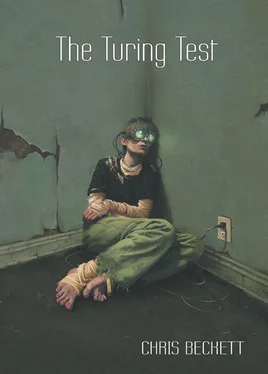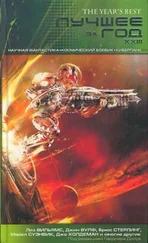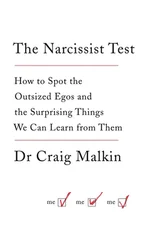“These security machines are unfortunately very prone to this problem,” said Savonari with a resigned gesture, addressing himself to Freddie. “Their senses and analytical apparatus are so very acute.”
Freddie, unable to understand a word, smiled vaguely and offered the sergeant a cigarette, which was declined.
“Our own machines are totally reprogrammed every week to avoid this,” the Sergeant said, nodding towards his sleek minder by the door, “but not everyone is so aware of the dangers.”
He made a little movement of exasperation and told me of a case he had dealt with recently where a robot farm hand had suddenly tossed its owner’s ten-year-old son into a threshing machine.
I shuddered. “What did you do?”
“Like all Rogues,” (the Italian word, it seems, is Incontrollabile ), “the machine had to be destroyed. But that was no help to the little boy.”
Again the angry gesture.
“I am a Catholic, Signor Philips. Like the Holy Father, I believe that to make machines in the likeness of people is a sin against the Holy Spirit. I would like to see them all destroyed.”
He snorted: “My little son had a machine once that taught him how to spell. I put it out for the dustman when I discovered he had given it a human name.”
Then he shrugged and got up: “But I can only enforce the law as it stands, Signor Philips. Thank you for getting in touch. I am sure we will find the macchina very soon.”
He shook our hands again and left. We heard him outside the door barking angrily at his ‘buddy’: “Pronto, bruto, pronto!”
* * *
Later as we leaned comfortably on a wall watching the bats looping and diving over the river Arno, Freddie enthused about that police machine. Apparently the things are actually made in Florence in the Olivetti labs out at the Citta Scientifica .
“Beautiful design,” Freddie said. “Nothing wasted. A really Italian machine.”
I liked that concept and proceeded to spout a lot of drunken nonsense about how the taut police minder was in a direct line of descent from Michelangelo’s David – how the wires and tubes under the transparent skin of the robot in the Accademia echoed the nerves and muscles in da Vinci’s sketches of dissected limbs…
Freddie just laughed.
* * *
Our days settled into a routine. We were woken in the morning by the humming of a little box-shaped domestic robot, which let itself in through a hatch in the door (and drove Freddie crazy by trying to vacuum up coins, paperbacks, socks and anything else which he’d left on the floor). Then we wandered round the corner to a café and had breakfast together before splitting up for the day: me heading for the museums and churches, Freddie for the Virtual Reality arcades.
In the evening I’d meet him in one or other of the arcades (looking like a gentle Nordic giant among the wiry Italian kids as he piloted a landing on Mars, or led a column of armoured sno-cats through an Alpine pass). He’d take off the headset and we’d go to a trattoria for a meal. Then we’d find a bar on some busy street or square, so we could sit outside and watch the city go by.
After a while you start to see not just a single city but several quite separate ones. There is the city of the Florentines themselves… There are the high-tech pan-Europeans from the Citta Scientifica , wearing Japanese fashions and speaking Brussels English, larded with German catchphrases… There is the city of the tourists: Americans, Japanese, foul-mouthed British kids on school trips, earnest Swedes clutching guide-books (all different, but all of them alike in the way that they move through the famous sights as if they were a VR simulation)… And then there is the city of the dispossessed: the Arabs, the Ethiopians, the Black Africans from Chad and Burkina Faso and Niger – hawkers, beggars, hustlers, climatic refugees from the burnt-out continent, climbing up into the belly of Europa along the long gangway of the Italian peninsula…
About the fifth or sixth day into the holiday, Freddie picked up a book somewhere called Illicit Italy (with a cover photo of a transvestite hooker, learning on a Roman bar). While we sat drinking in our roadside café in the evening he kept chuckling and reading passages out loud.
“Listen to this, Tom! ‘The Bordello Sano , or Safe Brothel, recently legalised by the Italian government in an attempt to curb the AIDS epidemic, can now be found on the outskirts of all the major Italian cities, staffed entirely by what the Italians call sinteticas, robots with living human skin…’”
I shifted uncomfortably in my seat. Freddie read on cheerfully:
“‘The obvious advantages of sinteticas are (a) that they are very beautiful and (b) that they are completely safe. But some say that the biggest advantage is the fact that they have no soul…’”
He read on a bit to himself, then looked up. “Hey, we should go and have a go Tom. It’d be a laugh!”
* * *
I have to admit that I knew about the Bordello Sano in Florence and had already considered a discreet visit, just to have a look . But discretion is not my little brother’s style. The whole way over there in a crowded bus, he chatted cheerfully about the sinteticas in an embarrassingly loud voice.
“Apparently they build them to look like famous models and film-stars. There’s some old woman who used to star in porn-movies when she was young and then got elected an MP. She sold her genes to a sintetica manufacturer. She said she was bequeathing her body to the men of Italy!”
I grunted.
“Another thing,” Freddie said, “there’s actually been cases of women pretending to be sinteticas because sinteticas are more popular and make more money. Weird isn’t it? A real woman pretending to be a fake?”
But when we actually got there, Freddie went very quiet. It was ruthlessly hygienic and efficient, quite terrifying in its cool matter-of-factness. You walked through the door and a receptionist gave you a sort of menu, illustrated and in the language of your choice. Then you went through into the lounge where the sinteticas waited under reproduction Boticellis in fake gilt frames, with canned Vivaldi twiddling away in the background.
They were extremely beautiful – and looked totally human too, except for the licence plates on their foreheads. (According to Freddie’s book you can check whether you’ve got a real sintetica by seeing if the licence plate is bolted on or just glued.)
A tall blonde in a black leather miniskirt came over to Freddie and offered her – its – services.
In a small dry voice he muttered: “English… No capito…”
“Oh I’m sorry,” it said in faultless Euro-English, “I said would you like to come upstairs with me?”
Freddie looked round at me helplessly. (The kid is only eighteen years old. I could at least have tried to keep him out of this.) I shrugged and attempted to smile as the sintetica led him away.
Then it was my turn. The creature that approached me was curvaceous and dusky-skinned, with a face so sweet it set my teeth on edge. And she wore a dress of white lace which left her graceful shoulders bare and showed most of the rest of her through pretty little patterned peepholes.
“Hi, I’m Maria. I’d be pleased if you decided to choose me.”
I felt myself smiling apologetically, shrivelling in the cool frankness of her gaze. I had to struggle to remind myself that this was not a ‘her’ at all. Under the veneer of real human skin and flesh was a machine: a thing of metal and plastic and wires…
Upstairs in a room full of mirrors and plastic roses and pink ribbons, the beautiful robot spread itself appealingly on the bed and asked me for my order. I remembered the menu thing clutched in my hand and started to read it. You could choose various ‘activities’ and various states of dress or undress. And you could choose from a selection of ‘personalities’ with names like ‘Nympho’, ‘ La contessa’ and ‘Virgin Bride’.
Читать дальше











